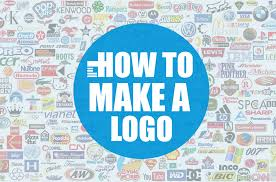How to Create a Logo
Introduction
Logos are more than just symbols; they are the face of a brand, representing its identity and values. In this article, we'll explore the process of creating a logo, from understanding its significance to the step-by-step creation process.
Understanding Logos
A logo is a visual representation of a brand or company. It serves as a quick and memorable way for customers to identify and connect with a business. A good logo should be simple, memorable, versatile, and relevant to the brand it represents.
Research and Inspiration
Before diving into design, it's crucial to understand the brand and its target audience. Conducting research on the industry and competitors can provide valuable insights into design trends and what sets the brand apart. Gathering inspiration from various sources, such as nature, art, and typography, can spark creativity and help generate ideas.
Sketching and Conceptualization
Once armed with research and inspiration, it's time to start sketching. Brainstorming ideas and sketching rough designs allow for experimentation and exploration of different concepts. As ideas take shape, it's important to refine and narrow down the options to a few strong contenders.
Digital Design
With the sketches in hand, it's time to bring the design to life digitally. Choosing the right design software, such as Adobe Illustrator or Canva, is essential for creating vector graphics that can be scaled without losing quality. Experimenting with different fonts, shapes, and colors helps to refine the design further.
Feedback and Iteration
Seeking feedback from peers, clients, or target audience members is a crucial step in the design process. Constructive criticism can provide valuable insights and help identify areas for improvement. Iterating on the design based on feedback ensures that the final logo meets the client's expectations and effectively represents the brand.
Finalizing the Logo
Once the design has been refined and approved, it's time to finalize the logo. Choosing the right file format, such as SVG or PNG, ensures that the logo can be used across various platforms and media. It's also important to test the logo's scalability to ensure that it looks good at different sizes. Obtaining final approval from the client seals the deal and marks the completion of the logo creation process.
Conclusion
In conclusion, creating a logo is a multifaceted process that requires creativity, research, and attention to detail. A well-designed logo can serve as a powerful tool for brand recognition and differentiation, setting the stage for success in a competitive market.
FAQs
1. How long does it take to create a logo?
- The time it takes to create a logo can vary depending on factors such as complexity, client feedback, and revisions. On average, it may take anywhere from a few days to a few weeks to finalize a logo design.
2. Do I need to be an artist to create a logo?
- While artistic skills can be beneficial, they are not necessarily required to create a logo. With the right tools and guidance, anyone can learn to design a logo that effectively represents a brand.
3. What if I'm not satisfied with the initial logo designs?
- If you're not satisfied with the initial logo designs, don't be afraid to communicate your concerns to the designer. Providing clear and constructive feedback can help steer the design in the right direction and ultimately lead to a logo that meets your expectations.
4. Can I create a logo for free?
- There are many free design tools and resources available online that can help you create a basic logo. However, for a more professional and customized logo, it may be worth investing in the services of a professional graphic designer.
5. What should I consider when choosing colors for my logo?
- When choosing colors for your logo, consider factors such as brand identity, target audience, and industry standards. Colors evoke emotions and can influence how your brand is perceived, so choose colors that align with your brand values and resonate with your target audience.






0 Comments